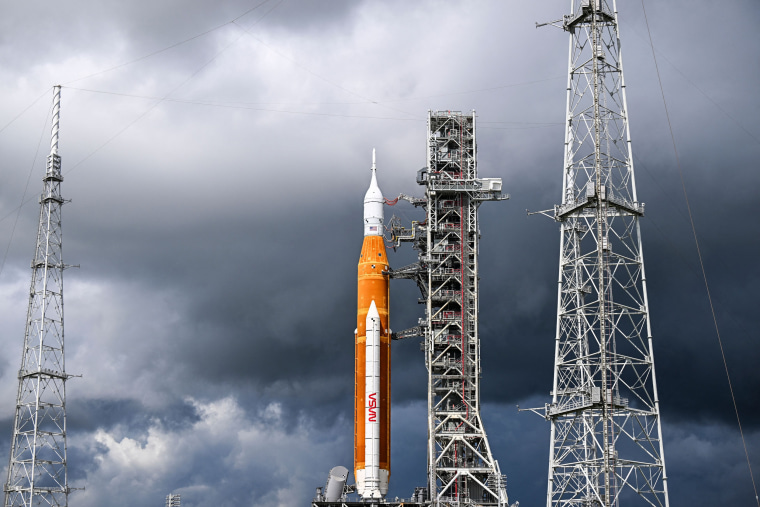CAPE CANAVERAL, Fla. — NASA on Saturday called off another attempt to launch the agency's new moon rocket on a key test flight after a hazardous leak was detected during the fueling process.
The leak occurred as the launch team began loading nearly 1 million gallons of fuel into the 322-foot (98-meter) rocket, the most powerful ever built by NASA. A previous liftoff attempt Monday was halted by a bad engine sensor and leaking fuel.
NASA will not attempt another liftoff during the current launch period, which ends Tuesday, Jim Free, NASA's associate administrator for exploration systems development, said during a news conference Saturday afternoon.
As the sun rose over the launch pad, an over-pressure alarm sounded and the tanking operation was briefly halted, but no damage occurred and the effort resumed. But minutes later, hydrogen fuel began leaking from the engine section at the bottom of the rocket. NASA halted the operation, while engineers scrambled to plug what was believed to be a gap around a seal in the supply line.
An operations team tried three times to seal the “large leak,” but was unable to, Artemis mission manager Mike Serafin said during the news conference.

NASA had a two-hour-long launch window Saturday to get the rocket into orbit.
NASA wants to send the crew capsule atop the rocket around the moon, pushing it to the limit before astronauts get on the next flight. If the test flights are successful, astronauts could fly around the moon in 2024 and land on it in 2025. People last walked on the moon 50 years ago.
On Monday, hydrogen fuel escaped from elsewhere in the rocket. Technicians tightened up the fittings over the past week, but launch director Charlie Blackwell-Thompson stressed that she wouldn’t know whether everything was tight until Saturday’s fueling.
Even more of a problem on Monday, a sensor indicated one of the rocket’s four engines was too warm, but engineers later verified it was cold enough. The launch team planned to ignore the faulty sensor this time around and rely on other instruments to ensure each main engine was properly chilled.
Before igniting, the main engines need to be as frigid as the liquid hydrogen fuel flowing into them at minus-420 degrees Fahrenheit (minus-250 degrees Celsius). If not, the resulting damage could lead to an abrupt engine shutdown and aborted flight.
Mission managers accepted the additional risk posed by the engine issue as well as a separate problem: cracks in the rocket’s insulating foam. But they acknowledged that other problems — such as fuel leaks — could prompt yet another delay.
That didn’t stop thousands from jamming the coast to see the Space Launch System rocket soar. Local authorities expected massive crowds because of the long Labor Day holiday weekend.
The $4.1 billion test flight is the first step in NASA’s Artemis program of renewed lunar exploration, named after the twin sister of Apollo in Greek mythology.
Twelve astronauts walked on the moon during NASA’s Apollo program in 1972.
Artemis — years behind schedule and billions over budget — aims to establish a sustained human presence on the moon, with crews eventually spending weeks at a time there. It’s considered a training ground for Mars.
